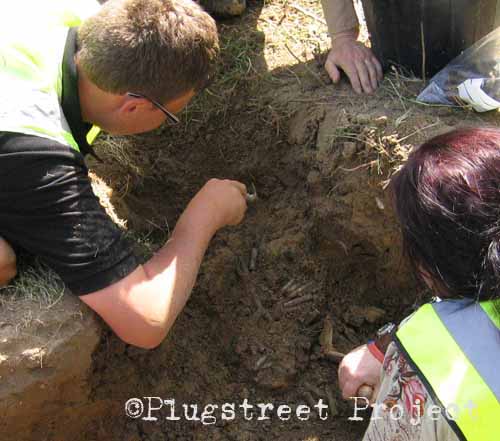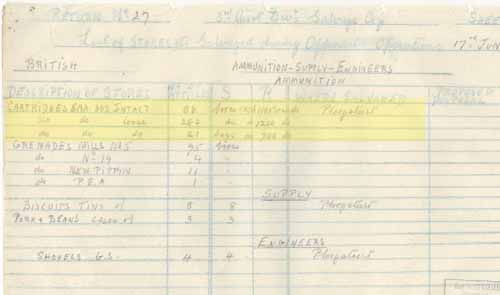The Plugstreet Archaeological Project
Salvaged Rounds.
Although the Battlefields of the Western Front are still littered with the detritus of war, the volume of ammunition and equipment which has been recovered in the ninety years since the end of hostilities falls a long way short of the amount of rounds fired and the number of equipment sets issued. Although some remains undiscovered in the mud and underground workings, the main reason for this dispartiy is a concept which most people would imagine to be a modern invention; recycling.
The sheer volume of rounds and shells fired during the war is almost incomprehensible, across the world factories were converted to produce ammunition for the war effort. It is estimated that over a Billion shells were used during the Great War. In the first twelve days of the Battle of Messines offensive, 3.5 million shells were fired by the Artillery. The volume of small arms aummunition, such as the .303 round used in the Lee Enfield Rifle, Vickers and Lewis Machine Guns, was massive.
By the time of the Battle of Messines in June 1917, the war had been raging for almost three years and raw materials were becoming scarce. To counter the problem, Salvage Companies had been set up to to recycle war materials. Their tasks included returning lost or unwanted items to stores so that they could be reissued, and also the collection of used ammunition cases which were returned to the Munitions Factories to be refilled.

Salvaged Rounds.
Whilst investigating a small dug out inside the lip of Ultimo Crater, the team came across a sandbag full of empty .303 cases. These had obviously been collected for salvage but never returned to base.
During the Battle of Messines the Salvage Company responsible for the area in which we are working, was the 3rd Australian Salvage Company. Their War Diaryfor June details the material salvaged from the Battlefield between the River Douve and River Lys, it also records the difficulties of undertaking such a task during the offensive. Problems such as the Advanced Salvage dumps being subjected to shelling, which inevitably destroyed the equipment collected and the lack of transport away from the front line, as the trench railways were being used to evacuate injured soldiers.
The lists of items salvaged shed a little light on the complexities of war fare, and the objects recovered are similar in range to those the Team come across during our excavations, items such as Great Coats, uniform jackets, blankets and pairs of socks, PH hoods, tear goggles and odd boots, webbing sets, water-bottles, rifles and bayonets, all items of personal kit no longer needed in the front line, often the property of injured men who had been transported from the front line for treatment. Unused rations are also listed as being returned to base, tins of biscuits and cases of corned beef and also pork and beans. In the days after the initial attack the contents of the salvage lists expands to include more general items, gum boots, hurricane lamps, blankets, horse shoes and nails, wire cutters and machine guns, periscopes and oil cans, horse blankets, tack, clippers and parts of waggons, axle grease and jars of rum, shovels and picks, even a badly damaged bicycle.
Enemy equipment is also collected and returned to base, that which could be used would be, and of course the enemy would also salvage what they could. There are records of German forces using French weapons and ammunition, captured in the early offensives of 1914 and re-issued to their expanding army as their own weapons became scarce.
The Salvage lists of the 3rd Australian Salvage Company confirm the collection of spent .303 cartridge cases, with 284 bags each containing 1200 used rounds and 21 bags each containing 700 used rounds being listed as recovered from the Ploegsteert area on the 17th of June alone.
|
Website and All Material © Copyright MMX - MMXVII - All Rights Reserved The Plugstreet Archaeological Project Website and Multimedia by Middleton House Productions |


